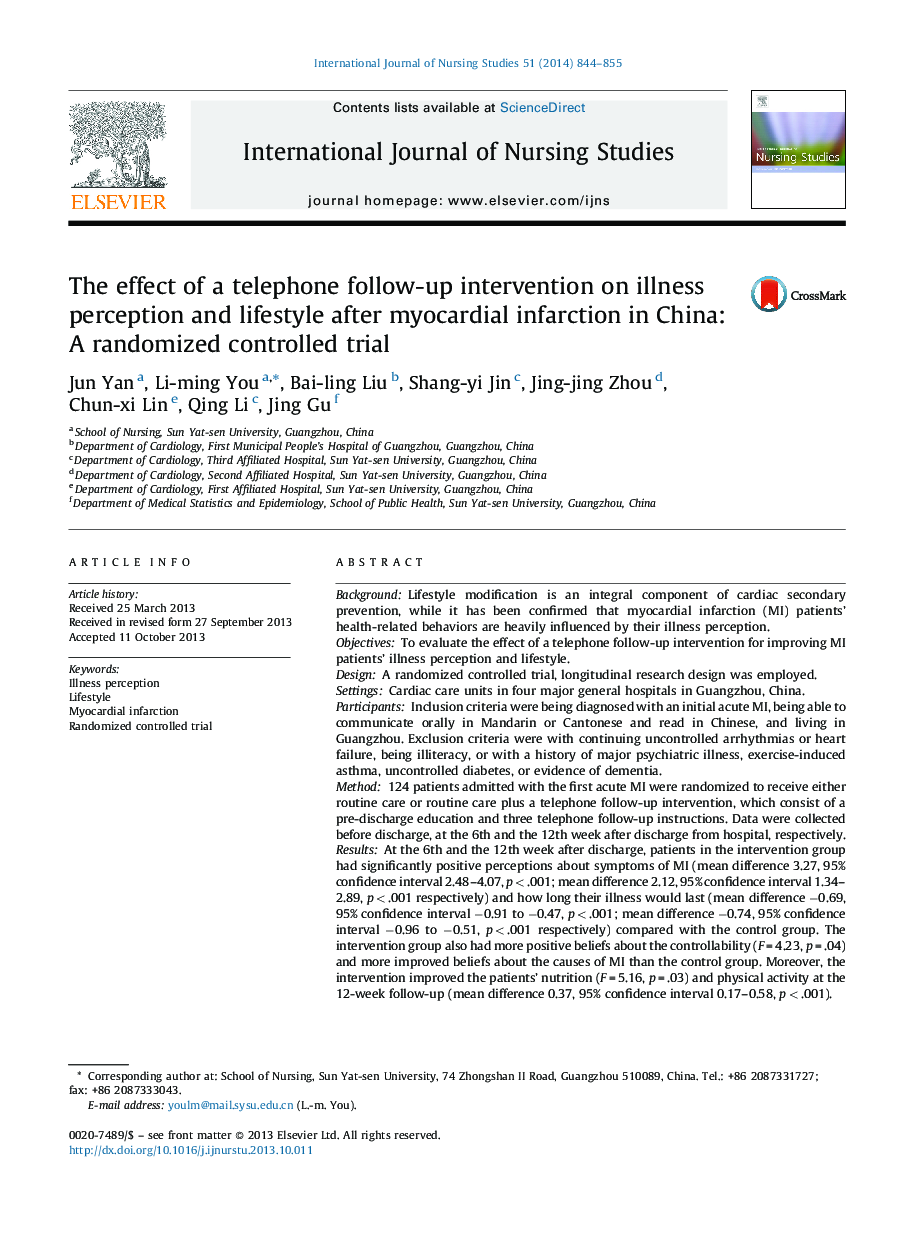| Article ID | Journal | Published Year | Pages | File Type |
|---|---|---|---|---|
| 1076097 | International Journal of Nursing Studies | 2014 | 12 Pages |
BackgroundLifestyle modification is an integral component of cardiac secondary prevention, while it has been confirmed that myocardial infarction (MI) patients’ health-related behaviors are heavily influenced by their illness perception.ObjectivesTo evaluate the effect of a telephone follow-up intervention for improving MI patients’ illness perception and lifestyle.DesignA randomized controlled trial, longitudinal research design was employed.SettingsCardiac care units in four major general hospitals in Guangzhou, China.ParticipantsInclusion criteria were being diagnosed with an initial acute MI, being able to communicate orally in Mandarin or Cantonese and read in Chinese, and living in Guangzhou. Exclusion criteria were with continuing uncontrolled arrhythmias or heart failure, being illiteracy, or with a history of major psychiatric illness, exercise-induced asthma, uncontrolled diabetes, or evidence of dementia.Method124 patients admitted with the first acute MI were randomized to receive either routine care or routine care plus a telephone follow-up intervention, which consist of a pre-discharge education and three telephone follow-up instructions. Data were collected before discharge, at the 6th and the 12th week after discharge from hospital, respectively.ResultsAt the 6th and the 12th week after discharge, patients in the intervention group had significantly positive perceptions about symptoms of MI (mean difference 3.27, 95% confidence interval 2.48–4.07, p < .001; mean difference 2.12, 95% confidence interval 1.34–2.89, p < .001 respectively) and how long their illness would last (mean difference −0.69, 95% confidence interval −0.91 to −0.47, p < .001; mean difference −0.74, 95% confidence interval −0.96 to −0.51, p < .001 respectively) compared with the control group. The intervention group also had more positive beliefs about the controllability (F = 4.23, p = .04) and more improved beliefs about the causes of MI than the control group. Moreover, the intervention improved the patients’ nutrition (F = 5.16, p = .03) and physical activity at the 12-week follow-up (mean difference 0.37, 95% confidence interval 0.17–0.58, p < .001).ConclusionThis telephone follow-up intervention can result in improved illness perception and lifestyle after MI. It could be incorporated into current hospital treatment regimens for MI to improve patients’ quality of life.
